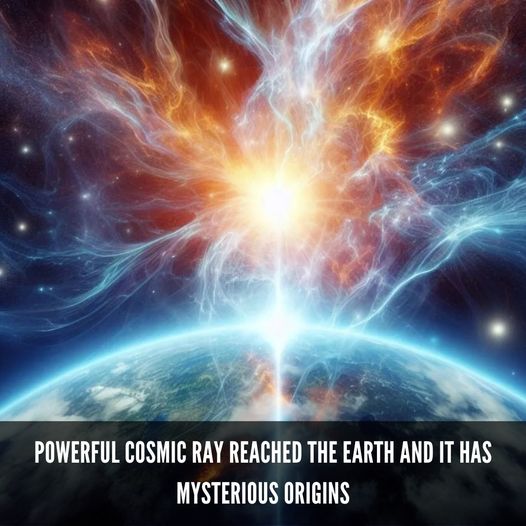
Scientists have identified an extraordinary and exceptionally high-energy particle making its way to Earth, sparking bewilderment due to its origin from an apparently empty region of space.
Dubbed “Amaterasu” after the sun goddess in Japanese folklore, this particle ranks among the most energetic cosmic rays ever observed.
Traditionally, only colossal cosmic phenomena, surpassing the magnitude of a star’s explosion, were believed capable of generating such intense particles. Yet, Amaterasu’s emergence appears linked to the Local Void, a desolate stretch adjoining the Milky Way galaxy.
“You trace its trajectory to its source and there’s nothing high energy enough to have produced it,” said Prof John Matthews, of the University of Utah and a co-author of the paper in the journal Science that describes the discovery. “That’s the mystery of this – what the heck is going on?”
The Amaterasu particle has an energy exceeding 240 exa-electron volts (EeV), millions of times more than particles produced in the Large Hadron Collider, the most powerful accelerator ever built, and equivalent to the energy of a golf ball travelling at 95mph. It comes only second to the Oh-My-God particle, another ultra-high-energy cosmic ray that came in at 320 EeV, detected in 1991.
“Things that people think of as energetic, like supernova, are nowhere near energetic enough for this,” said Matthews. “You need huge amounts of energy, really high magnetic fields, to confine the particle while it gets accelerated.”
Toshihiro Fujii, an associate professor at Osaka Metropolitan University in Japan, said: “When I first discovered this ultra-high-energy cosmic ray, I thought there must have been a mistake, as it showed an energy level unprecedented in the last three decades.”
“These events seem like they’re coming from completely different places in the sky. It’s not like there’s one mysterious source,” said Prof John Belz of the University of Utah and a co-author of the paper.
“It could be defects in the structure of spacetime, colliding cosmic strings. I mean, I’m just spitballing crazy ideas that people are coming up with because there’s not a conventional explanation.”
Extremely high-energy cosmic rays come from outside the Milky Way, but their exact sources are unknown.
Most scientists think they are accelerated in violent cosmic environments, such as the jets of radiation that blast out of the areas around certain supermassive black holes, or starburst galaxies that form stars at a frenetic pace.
Whatever their origins, the particles must come from the relatively nearby cosmic neighborhood.
